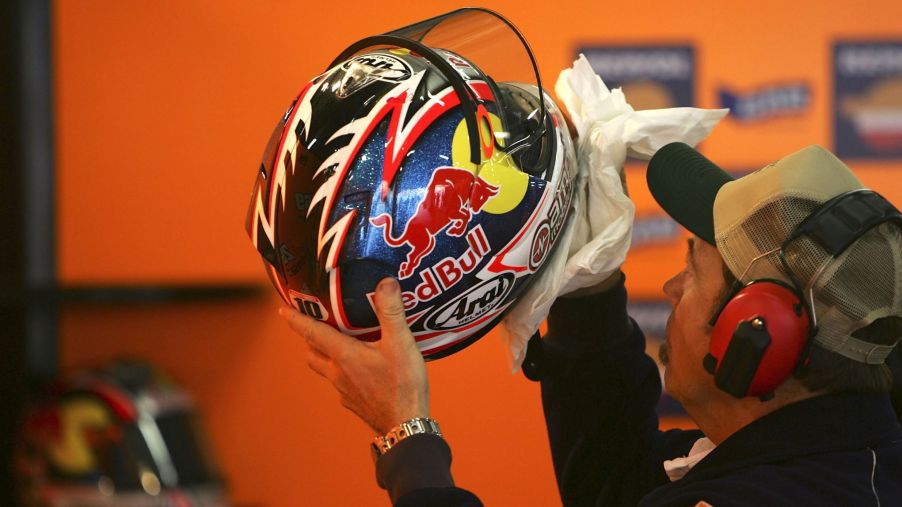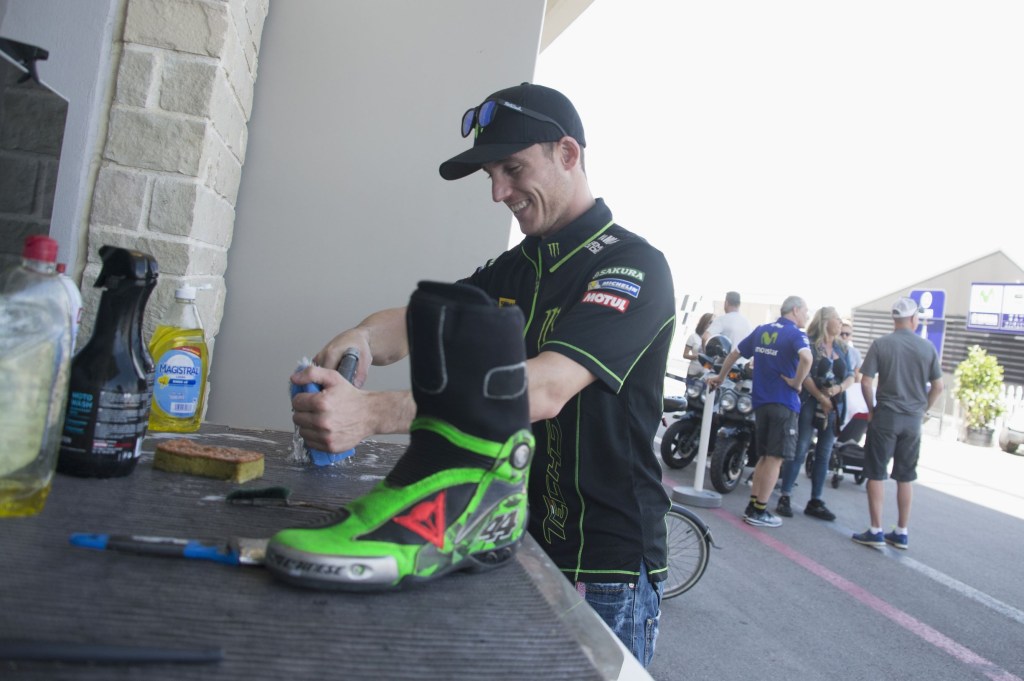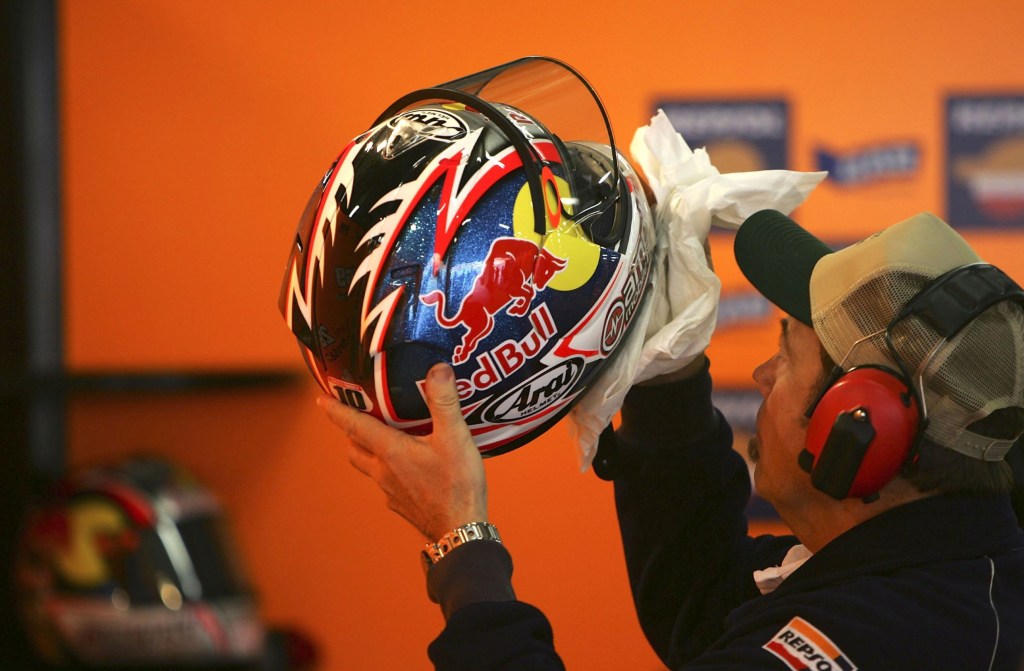
How Do You Clean Motorcycle Gear?
Whether you ride through winter’s chill or only under sunny skies, your riding gear still gets exposed to the elements. That means, just like the bike itself, you have to regularly clean your motorcycle gear. But it’s not just for aesthetic reasons. Dirt hides high-visibility elements, baking heat dries out leather, and rocks and sunlight wear away water-proofing. Cleaning your gear, then, helps keep it in tip-top shape. And it’s not as difficult as some may think.
You can machine-wash some gear, but only if the label gives the OK

Before you start to clean your motorcycle gear, there’s one thing you have to do. And that’s read the care label. Or, if you’re cleaning your motorcycle helmet, check the owner’s guide or manufacturer’s website.
As with regular clothing, the care labels on your motorcycle gear explain the cleaning process. That includes whether or not the gear is machine-washable. Cleaning some modern textile jackets and pants is as easy as throwing them in the washing machine for a cold wash cycle, Motorbike Writer explains. Just make sure to remove any armor or pocket contents first. And turn your jeans or pants inside-out, Motorcyclist notes.
For machine-washing, use a neutral-pH soap or detergent; nothing with chlorine, bleach, or other harsh chemicals. Also, don’t use fabric softener as it ruins the waterproofing and breathability. Some gear companies sell specially-formulated washes for their textile products. Another option, especially if you want to renew your gear’s water-proofing properties, is using Nikwax’s textile-formulated products, Cruiser reports. Regardless of the specific detergent, though, the clean motorcycle gear should be hung to air-dry.
If the care label doesn’t allow for machine-washing, though, that means you have to clean your motorcycle gear by hand. You can also do this to pre-clean machine-washable gear if it’s really dirty. This involves scrubbing the item in question with a soft brush and some mild detergent mixed with lukewarm water. Though with jeans and pants, you can likely swap the brush for a microfiber cloth, Motorcyclist says. Once that’s done, rinse with clean water, and hang it up to air-dry.
How do you clean a leather motorcycle jacket or other leather gear?
Note, the above instructions only apply if you have to clean textile motorcycle gear. The cleaning process for leather gear is similar in some ways, but not identical.
Firstly, you can’t machine-wash a leather motorcycle jacket, gloves, or boots. Some leather jackets have removable washable textile liners, RevZilla notes. And if the liner isn’t removable, you can air it out and/or spray it with deodorizers and de-salters. However, the leather parts have to be cleaned by hand. That applies whether you’re cleaning a jacket, gloves, or leather motorcycle boots.
To clean leather gear, first, make sure it’s free of any dirt or grime. Next, apply some leather cleaner to a clean cloth or rag and gently rub it in using a circular motion. If the cloth gets dirty, rinse and ring it out before continuing. Wipe away any excess cleaner with a clean cloth. Once that’s done, let the gear dry completely, preferably for 24 hours. This is especially important if you plan on conditioning the leather afterward.
You don’t have to condition your leather motorcycle gear every time you clean it, RevZilla says. Although it extends the leather’s lifespan and keeps it supple and resilient, over-conditioning can actually speed up wear. Depending on where and how you ride, you should condition your leather gear no more than twice per year. And usually once per year is enough.
As with leather cleaner, certain gear brands may have specific conditioners formulated for their products. But the application process is fairly universal. First, make sure the gear is completely clean. Next, apply some conditioner to a damp applicator, such as a sponge, and rub it gently over the garment. And make sure it dries completely before wearing it.
Cleaning a motorcycle helmet requires washing the inside and the outside

After your jacket, boots, pants, and gloves, there’s one more piece of motorcycle gear to clean: your helmet. And while it’s a little more involved than washing a jacket, the process is roughly the same.
First, remove any communication systems or other attached electronics, as well as the liner and cheek pads. The liner and pads absorb sweat and oil and need to be washed regularly. Some liners and pads are machine-washable, but hand-washing them is relatively straightforward. Just fill a small tray with warm water and mild soap or baby shampoo and “dunk, scrub, and massage” the liner and pads in it, RevZilla says. Then lay them out and let them air-dry.
As for the helmet itself, as with jackets, gloves, and boots, harsh and petroleum-based chemicals can damage it. Hence why warm water, maybe mixed with something like baby shampoo, is all that’s needed to clean the helmet’s exterior. That includes the visor and sun shield if your helmet has them. However, there are specially-formulated motorcycle helmet cleaning sprays available.
But regardless of which cleaning solution you pick, use it in conjunction with a clean microfiber cloth. If necessary, briefly lay a wet cloth over areas with caked-on grime to make it easier to dislodge. And once everything’s clean, let it air dry before reassembling the helmet.
Cleaning your motorcycle gear may take some time, but it’s worth the investment to keep it in good condition for as long as possible.
Follow more updates from MotorBiscuit on our Facebook page.


